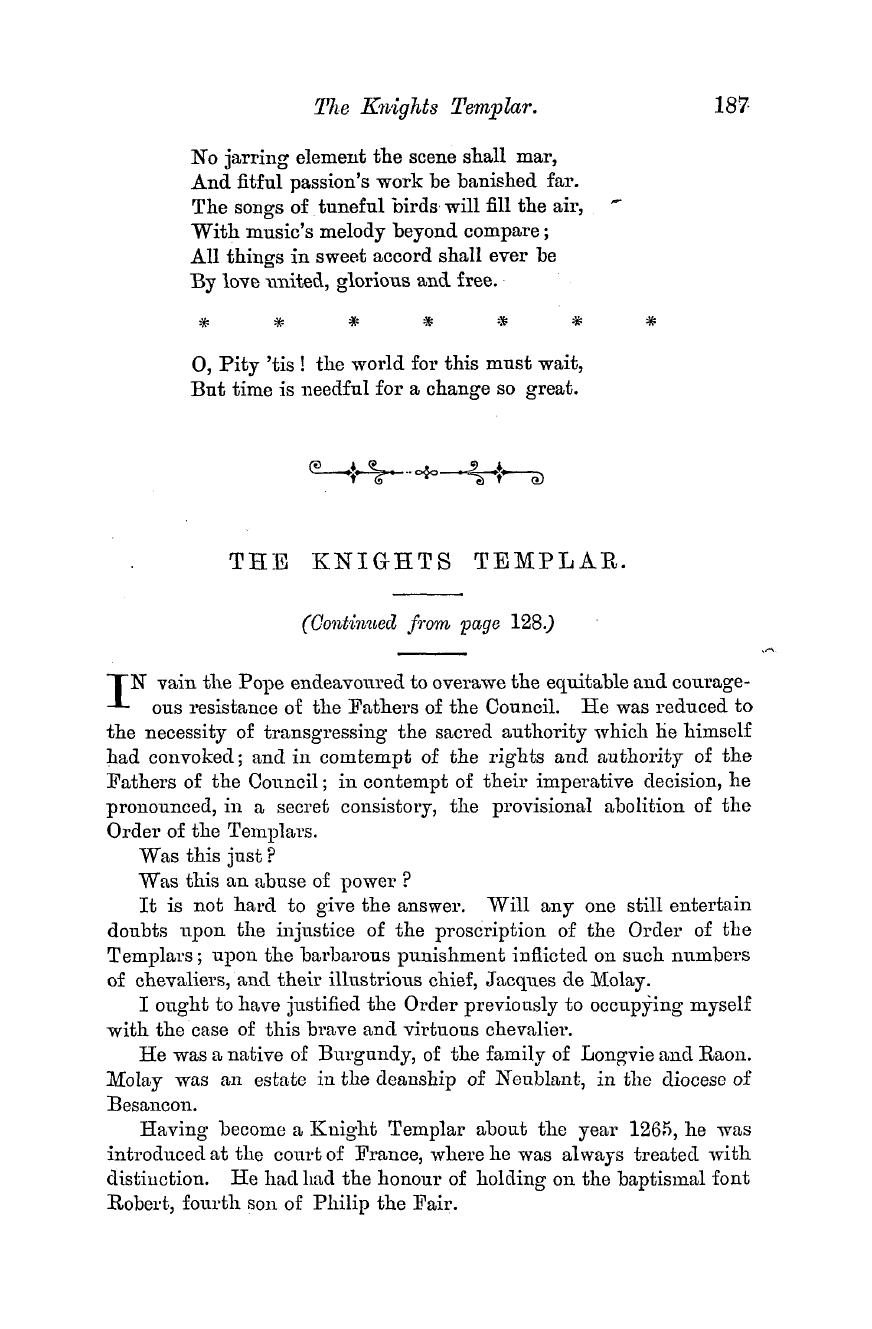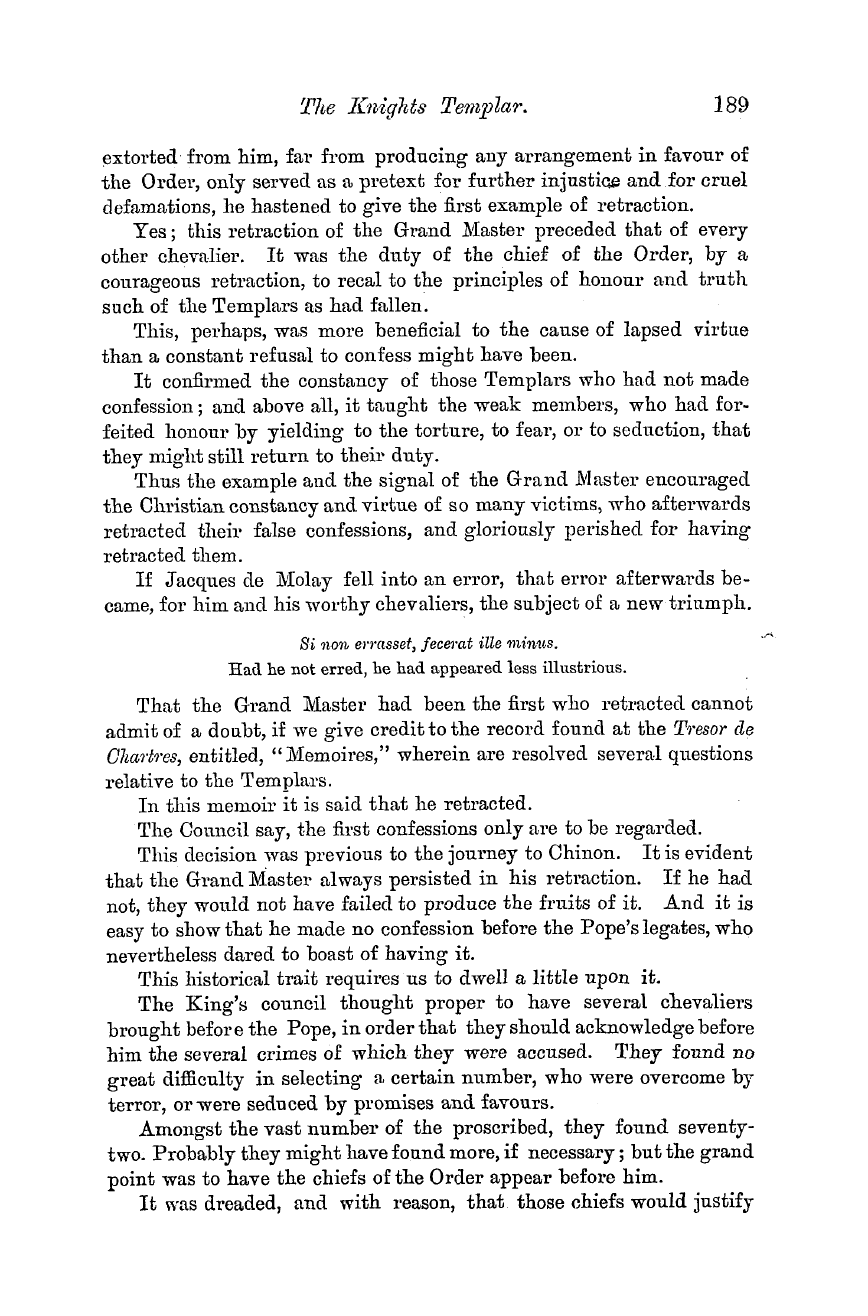-
Articles/Ads
Article FAR EASTERN ANCIENT RITES AND MYSTERIES. ← Page 3 of 3
Note: This text has been automatically extracted via Optical Character Recognition (OCR) software.
Far Eastern Ancient Rites And Mysteries.
The practice we have dwelt upon may not appear to be immediately and closely connected with ancient rites of a Masonic character , but any description of some important details has been necessarily omitted for obvious reasons , and in these centre the main facts' that give the clue . In Japan the various rites of the ancient Cultus have
doubtless become modified from the earlier forms during the long ages and the many vicissitudes they have passed through . The earliest observances of the Shinto ( Divine path ) have been obscured , and even in some cases completely obliterated , by the more modern Budhism introduced in the fifth century of our era , itself a kind of
Hindu Protestantism at that period . Nevertheless , a close study of the utensils , costumes , and other matters connected with the pre-Budhistic period will well reward the time and energy expended . Industrious students have traced very striking similarities between early-Japanese and Hebrew life , so far as they can be compared now , that
do not appear in the Eastern or North-Eastern provinces of Asia . It will afford the writer of these crude notes very great pleasure to communicate fuller details to any duly accredited Brother ; and with the aid of native illustrations , diA ^ e deeper into this very interesting branch of oriental research , hoping that some crude pebbles may
be found therein , which , in the hands of the skilful Craftsmen , may be properly " worked " and mounted in fitting settings to become valuable " jewels " in the " regalia " of Masonic research .
By careful investigation into ancient forms , much valuable material can , without doubt , be exhumed from a mass of OA-erwhelminodebris , and the intellectual pleasure that the true student derives well repays the labour . The routine of the work , in the loAA r er grades of the Craft , is also relieved by interesting variation in the intellectual
stimulus , and fresh light is thrown upon much that otherwise appears at first meaningless formula . It is to be sincerely desired that Ave are UOAV entering upon an era of revival of Masonic literature and research , and as many Brothers are residing abroad under exceptionally favourable conditions for
investigation , they would confer benefit to the Order that would redound to their own credit if they would folloAV up the work of research in the Extreme Orient . ( To be continued . )
T ft * » 1 T fa )
Note: This text has been automatically extracted via Optical Character Recognition (OCR) software.
Far Eastern Ancient Rites And Mysteries.
The practice we have dwelt upon may not appear to be immediately and closely connected with ancient rites of a Masonic character , but any description of some important details has been necessarily omitted for obvious reasons , and in these centre the main facts' that give the clue . In Japan the various rites of the ancient Cultus have
doubtless become modified from the earlier forms during the long ages and the many vicissitudes they have passed through . The earliest observances of the Shinto ( Divine path ) have been obscured , and even in some cases completely obliterated , by the more modern Budhism introduced in the fifth century of our era , itself a kind of
Hindu Protestantism at that period . Nevertheless , a close study of the utensils , costumes , and other matters connected with the pre-Budhistic period will well reward the time and energy expended . Industrious students have traced very striking similarities between early-Japanese and Hebrew life , so far as they can be compared now , that
do not appear in the Eastern or North-Eastern provinces of Asia . It will afford the writer of these crude notes very great pleasure to communicate fuller details to any duly accredited Brother ; and with the aid of native illustrations , diA ^ e deeper into this very interesting branch of oriental research , hoping that some crude pebbles may
be found therein , which , in the hands of the skilful Craftsmen , may be properly " worked " and mounted in fitting settings to become valuable " jewels " in the " regalia " of Masonic research .
By careful investigation into ancient forms , much valuable material can , without doubt , be exhumed from a mass of OA-erwhelminodebris , and the intellectual pleasure that the true student derives well repays the labour . The routine of the work , in the loAA r er grades of the Craft , is also relieved by interesting variation in the intellectual
stimulus , and fresh light is thrown upon much that otherwise appears at first meaningless formula . It is to be sincerely desired that Ave are UOAV entering upon an era of revival of Masonic literature and research , and as many Brothers are residing abroad under exceptionally favourable conditions for
investigation , they would confer benefit to the Order that would redound to their own credit if they would folloAV up the work of research in the Extreme Orient . ( To be continued . )
T ft * » 1 T fa )































































